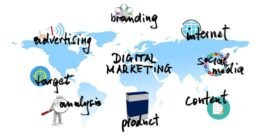Big Data has emerged as a transformative force in the modern world, driving innovations across various industries and reshaping societal norms. It refers to the vast volume of data generated by digital technologies, including social media, Internet of Things (IoT) devices, and business transactions. This article explores the concept of Big Data, its applications, and the challenges it poses.
Understanding Big Data
Big Data is characterized by the three V’s: Volume, Velocity, and Variety.
- Volume refers to the sheer amount of data generated every second. For instance, Facebook alone processes over 500 terabytes of data daily.
- Velocity denotes the speed at which data is generated and processed. With the advent of IoT and real-time data analytics, data is being collected and analyzed at unprecedented speeds.
- Variety encompasses the different types of data, from structured data in traditional databases to unstructured data such as text, images, and videos.
Applications of Big Data
- Healthcare: Big Data analytics in healthcare can lead to improved patient outcomes by enabling personalized medicine, predictive analytics for disease outbreaks, and enhanced clinical decision-making. For example, wearable devices track patient vitals in real time, allowing for timely interventions.
- Finance: In the financial sector, Big Data is used for risk management, fraud detection, and algorithmic trading. By analyzing transaction patterns, financial institutions can detect anomalies indicative of fraudulent activities.
- Retail: Retailers leverage Big Data to optimize supply chains, enhance customer experiences through personalized marketing, and manage inventory more efficiently. For example, Amazon uses predictive analytics to recommend products based on past purchases and browsing history.
- Transportation: Big Data helps in optimizing routes, reducing fuel consumption, and improving passenger experiences in the transportation industry. Ride-sharing services like Uber utilize real-time data to match demand with supply efficiently.
- Smart Cities: Urban planning and management benefit significantly from Big Data. Sensors and IoT devices collect data on traffic, air quality, and energy usage, helping cities to optimize resources and improve the quality of life for residents.
Challenges of Big Data
Despite its potential, Big Data also presents several challenges:
- Data Privacy and Security: The vast amount of data collected often includes sensitive personal information, raising concerns about data breaches and privacy violations. Ensuring data protection and compliance with regulations like GDPR is paramount.
- Data Quality: The accuracy and reliability of data are crucial for effective analytics. Inconsistent or incorrect data can lead to faulty insights and poor decision-making.
- Storage and Processing: Managing the storage and processing of large datasets requires significant resources. Cloud computing has provided scalable solutions, but the costs and complexities involved remain substantial.
- Skills Gap: There is a growing demand for skilled professionals in data science, analytics, and related fields. Bridging this skills gap is essential to fully harness the power of Big Data.
The Future of Big Data
The future of Big Data lies in its integration with emerging technologies such as Artificial Intelligence (AI), Machine Learning (ML), and Blockchain. AI and ML can enhance data analytics by providing more accurate predictions and uncovering hidden patterns. Blockchain can ensure data integrity and security through decentralized and immutable records.
Moreover, advancements in quantum computing hold the promise of exponentially increasing the processing power available for Big Data analytics, enabling even more complex and comprehensive analyses.











